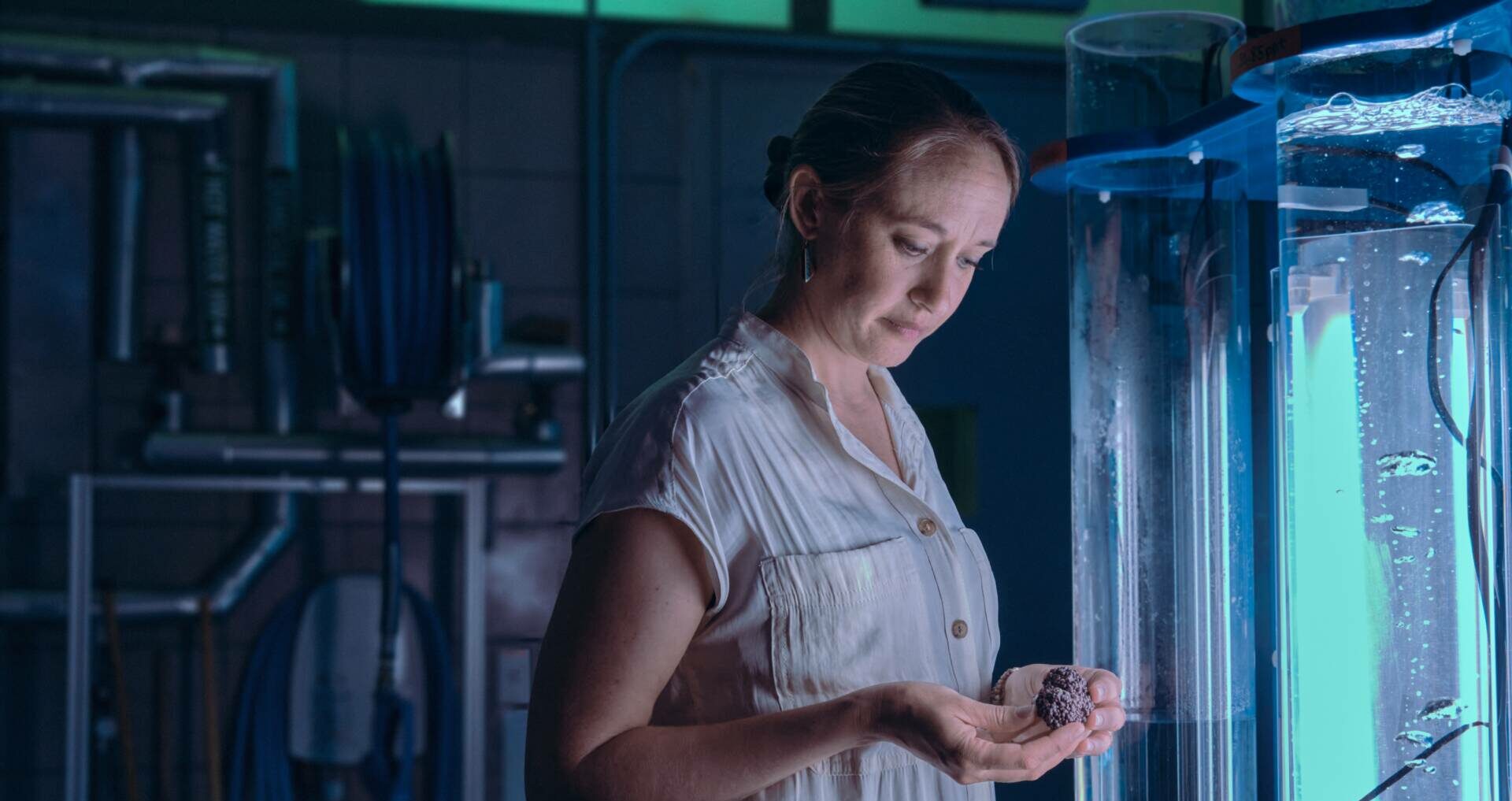When it comes to restoration of corals on coral reefs, most attention is directed to the corals themselves. The focus tends to be on pragmatic questions such as: what species are best placed where? How to “plant” baby corals? And how can we scale up restoration in a cost-effective way?
However, marine biologist Maggie Johnson from KAUST is exploring even more fundamental and practical questions: how to accurately measure environmental conditions to optimize coral restoration? And, in doing this, how best to support coral reef managers and practitioners with very locally relevant advice?
Reef-building corals only thrive within a narrow range of environmental conditions. For example, they inhabit tropical waters because they prefer water temperatures between 20 to 28 degrees Celsius. As climate change causes sea temperatures to rise, coral reefs are increasingly pushed out of their watery thermal “comfort zone,” which is causing coral bleaching events and is contributing to the ongoing demise of reefs. One adaptation strategy is coral restoration programs that aim to conserve and rebuild coral reefs through “planting” baby corals likely to be more heat tolerant.
“Coral reefs are increasingly pushed out of their watery thermal ‘comfort zone,’ which is causing coral bleaching events.”
According to Johnson, the success of coral management and restoration efforts relies upon the ability of researchers and practitioners to understand the environment they are working in. To do this, they need accurate and reliable measurements of the environmental parameters that influence coral reef growth, such as temperature and light.
Surprisingly, the devices used to measure environmental conditions vary widely in precision and accuracy, which can confound reef monitoring. “There are a variety of off-the-shelf instruments and sensors available, but it is challenging to know which ones to use and how to use them,” says Johnson. “For example, there is a readily available, cost-effective data logger that can measure light and temperature. That’s great for some purposes, but it may not be the best approach for others.”
Monitoring the monitoring devices is particularly important in the Red Sea. “We’re finding that some of the commercially available instruments just can’t cut it in the warm temperatures and high salinity of the Red Sea,” explains Johnson. “Deploying those sensors would give us incorrect data, which could have critical repercussions for the success of the coral reefscaping efforts. For example, one of the oxygen loggers completely fails when temperatures get warmer than average, which happens on a daily basis in the Red Sea in summer.”
“Some of the commercially available instruments just can’t cut it in the warm temperatures and high salinity of the Red Sea.”
The need to understand the most appropriate equipment to use for different circumstances has captured the interest of Saudi development initiatives that involve coral restoration, such as NEOM’s Shusha Island Coral Park, an expansive 100 hectares of coral gardens that aims to showcase innovations to protect and restore coral reefs.
Johnson, alongside colleagues Mike Fox and Susana Carvalho, is funded by the R&D program of KAUST’s Reefscape Restoration Initiative at Shusha Island to test a range of off-the-shelf sensors to evaluate both the accuracy and usability of the instruments. “We are testing to see if the sensors take the desired measurement properly, how easy to use and maintain they are and whether they are cost effective,” says Johnson.
The team will use these results to develop a decision tree useful for managers and practitioners. “For example,” explains Johnson, “a manager might want to assess the health of their corals, and, in that particular place, temperature might be the most important factor. So they follow the criteria outlined in the decision tree to identify the most suitable instrument for their specific needs.”
“The team will use these results to develop a decision tree useful for managers and practitioners.”
Just as important is the development of standard protocols for collection of the best data with different instruments: how to deploy them and maintain them underwater to increase the reliability of the data they collect. And a downstream pipeline that people can use to upload the massive data files collected by these instruments, process the data and generate useful summary information and plots.
The need for this project arose from discussions between the researchers and their Shusha Island counterparts about what instruments should be used when first establishing the environmental conditions at a target site. “For marine biologists and reef practitioners, who aren’t immersed in the fields of sensor development and oceanographic instrumentation, this can be quite overwhelming,” says Johnson. “We want to make evidence-based decisions on what loggers are best, and so far, we only have anecdotal data from personal experience using different sensors.”
“The long-term goal of this work is to provide options for the science and management community to be able to more reliably and accurately measure the environment and for practitioners to be able to apply that knowledge to improve the success of their reef conservation efforts,” Johnson says.
As well as supporting the Vision 2030 goals for the Red Sea, findings from this project will also aid international reef restoration efforts. Big development projects in the Red Sea, like Shusha Island, are well resourced, but Johnson highlights the limited resources of managers in many other international locations where she works. “Often, these coral reef managers have few resources, so it is important that we support them by identifying less costly options that will still suit their measuring needs.”

